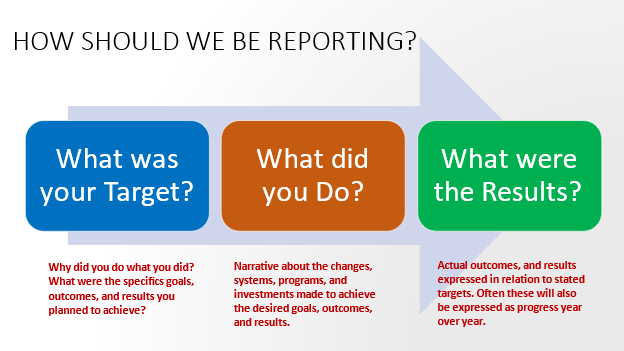Talent Development Leader
Talent Development Must Take a Leading Role in Human Capital Reporting
CTDO Next proposes these foundational, high-impact metrics to ensure organizations are measuring what matters.
Tue Jun 06 2023

In August 2020, the Securities and Exchange Commission (SEC) requirement for Human Capital Reporting prompted companies to give new focus to the subject. At that same time, the TD function was in the midst of a substantial transformation, taking on broad responsibility for many aspects of the employee life cycle and experience.
Most companies were already committed to improving transparency and providing a more complete picture of their operations, strengths, and risks, including accounting for how they manage their human capital. They recognized that optimizing their employees’ full commitment and potential was critical to productivity, innovation, customer satisfaction, and overall business success.
Today, more than ever, we can demonstrate objectively what that contribution is, and we owe it to our companies to do just that. But with different strategies, priorities, regulations, and challenges, every organization has to choose which metrics are most meaningful to them. Whatever organization-specific measures they choose, we believe that a standard set of talent development metrics (beyond the SEC requirements) would serve all companies and that the talent development function should play an active role in recommending these metrics.
TD leaders must lead the organization to change not just the what of reporting, but the how. Simply reporting what happened is only half of the story; considering what was intended to happen is equally important.
In this spirit, CTDO Next proposes the following minimum requirements for human capital reporting.

Today, many organizations provide a long (and valuable) list of their programs and accomplishments in the talent realm. Still, three critical elements are often missing: what they intended to do, the results they expected, and how the results of what they did compare to their intentions. In that spirit, we offer our suggested talent measurement categories because TD is increasingly involved in all of them. But we’ll pay particular attention to talent development.
Attraction
Measures should focus on “fill to target” (whether the organization achieved its goals for bringing talent into the organization). Include the percent of critical positions identified as needed to be filled that actually were filled per the plan.
“Per the plan” is a critical aspect of the measure. The plan is not just numerical; it specifies the critical capabilities needed and the timeframe to fill them. Hires must be timely and at the level of capability required by the organization.
Additionally, we believe organizations should include a 12-month and 24-month lookback showing the percent of critical positions filled in the prior year and prior two years that are still succeeding in the organization.
Development
Internal mobility should be a measure of development. Include performance to overall targets and targets for key populations and demographics. Set goals for internal fills, especially in leadership roles. If the organization has upskilling and reskilling efforts underway, set specific targets and report performance to those targets.
As with the attraction metrics, 12- and 24-month lookbacks consider the percent of internal transitions from the prior year and prior two years that are still succeeding in the company.
Active development reporting can include looking at the percent of employees with plans in place, planned investment levels to support those plans, and performance to those plans.
Development impact is at the heart of our current reporting. Though we typically offer such data program-by-program, it is time to roll up to the macro level. Specific output, quality, cost, and time measures have improved due to investments in learning and development (L&D). Such measures include revenue per employee, recordable incident rates, inventory costs, average time to productivity, and cycle time.
We should also look to specific measures of customer satisfaction, job satisfaction, work habits (people measures), and innovation improved due to investments in L&D. Examples of such measures are customer complaints, grievances, and new products to market.
Development efficiency can look beyond traditional cost or time savings measures to determine how efficiently people learn in the organization. Metrics include number of instances to complete, average session length, and number of tries on assessments. All these can be compared to targets.
Retention
Retention is an area where most organizations have significant experience. As suggested in the prior two reporting categories, do not limit reporting to what turnover was, or even comparison of turnover rates to industry averages (though both are useful). Instead, report turnover to target. This includes overall turnover and performance to targets for key populations and demographics.
In the future, organizations will undoubtedly embrace more sophisticated measures of engagement, wellness, time to productivity, talent pipeline health or stagnation, and diversity. Indeed, some already are. And we will continue to perfect the means to assess the true financial implications of all these measures.
For now, our firm advice is that we, as TD professionals, must lead in helping our organizations report on how well we do what we say we will do when it comes to our people. For decades, we’ve been insisting that talent development drives organizational success. Today, our own increased professionalism, combined with advances in process and technology, enable us to prove definitively that our assertions are correct. We must advocate for every organization to report on that truth.
We propose these foundational, high-impact metrics to ensure organizations are measuring what matters. TD functions that measure these components of attraction, development, and retention will provide a transparent and well-rounded picture of the human capital side of the business while continuing to operate as true business partners.
Read more from Talent Development Leader.
